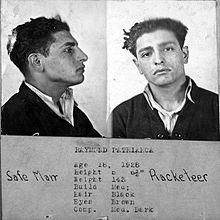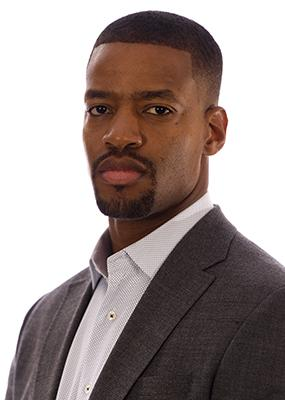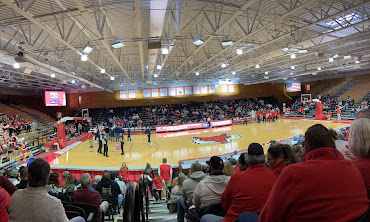 |
| Downtown Providence, RI |
For all of the city's history, Providence College itself is relatively new. It was founded in 1917 by the Dominican Order, hence the use of "Friars" as the school mascot. Between the Dominican Order's important place in the city's educational history, and the fact that Providence is the most Catholic city in the United States, Providence has a deeply religious history. The name itself is a biblical reference to "God's merciful Providence."
Many famous religious figures have presided over the pews of Providence. Yet, one of the most famous priests in Providence's history...wasn't even a priest at all. In fact, he wasn't even a real person. This is the story of the fictional Father Fagen, whose plea to set a young man free from prison led to the rise of one of America's most ruthless mob bosses.
Beneath the easygoing manner of Raymond Patriarca was one of New England's most brutal and prominent criminal masterminds. He operated his criminal empire out of the "Coin-o-Matic" vending business on Atwells Avenue in the heavily Italian Federal Hill district of Providence, crafting a tasteful resume that included gambling, pimping, theft, extortion, armed robbery and prostitution.
 |
| Mugshots of a young Raymond Patriarca. |
One of Patriarca's most crucial allies in the early days of his criminal empire was one Dan Coakley, who served on the Massachusetts Governor's Council during the tenure of Governor Charles Hurley. Coakley was known for bribing district attorneys to drop charges against his criminal allies, at least until he was disbarred. Nevertheless, his position on the Council allowed him to argue for the pardons of criminals of ranging notoriety even after his disbarment, which Governor Hurley would sign, no questions asked.
When Patriarca was arrested in 1938 for participating in an armed robbery of the Wallbank Jewelry Company in Brookline, MA, Coakley wrote a petition asking for the young man's pardon. He called the young man "virtuous," and claimed he had a mother to take care of. Supporting his claims were notes of support from three different priests. One, a Father Sixtus Brambilla, said he signed it with the belief that Patriarca had only committed minor offenses. Another, Father Phillip Guarino, didn't even know who Patriarca was. The third was from a Father Fagen, who was supposedly Patriarca's priest in Providence. The only problem is, Father Fagen didn't exist. He was named after the infamous antagonist from Charles Dickens' Oliver Twist.
The petitions worked, however. Patriarca only had to serve 84 days of a three to five year sentence. By the time a special House committee discovered Coakley's ruse, effectively ending his political career, Patriarca was at the height of his influence on New England's criminal underground. Like all empires do, however, Patriarca eventually fell. He began facing significant legal challenges in the 1960's and 70's. In one landmark trial in 1972, one of the prosecutors was Buddy Cianci, whose rise to prominence as the mayor of Providence on a wave of populist politics and his antics behind the scenes in his personal life served as a precursor to the rise of Donald Trump.
As for Patriarca, his legal troubles mounting and health declining, he would pass away in 1984 from a heart attack. Sadly, his legacy has led to his native Federal Hill becoming a major criminal hotbed that still remains so to this day. Just last summer, the area went viral after an armed robbery of a young couple spending a night out on the town was captured on video. The hope for elected officials in the area is that the "challenges" this neighborhood faces are able to work themselves out.
Source: New England Historical Society
 |
| Amica Mutual Pavilion |
Friartown: If there's anything that can bring the many different boroughs of Providence together, it's the Providence College Friars Men's Basketball team. The fanbase for the Friars is a passionate one, akin to an eclectic blend of the Syracuse Orange fanbase and the Bills Mafia. That's the beauty of having a sports team in a small city or a town; it seems to amplify the zeal the locals have for their team.
Rhode Island is home to four division one basketball teams, and while the state's diminutive size makes it easy to root for all of them, the Friars get the most attention. They're in a Power Five conference, for one thing, and they've got some success to show for their efforts, including seven appearances in the NCAA tournament in the past decade and a Sweet Sixteen appearance in 2022.
One of the keys to the program's recent success is Ed Cooley, who took the helm in 2011 after a moderately successful stint as the head coach of the Fairfield Stags. A Providence-native himself, Cooley quickly went to work rebuilding a program that hadn't made a tournament appearance since 2004, and that hadn't advanced in the tournament since its Elite Eight appearance in 1997.
The Friars shocked the NCAA establishment in 2014 when they won the Big East Conference tournament despite finishing the regular season with a mediocre 23-12 record. They earned the #11 seed in that year's NCAA tournament, and despite bowing out in the first round, Cooley and the Friars had demonstrated that they weren't a team to mess with.
 |
| Coach Ed Cooley. His tenure at Providence saw a successful rebuild into a Big East power, but his departure to Georgetown made him the most hated man in Rhode Island. |
In 2016, the Friars again made the big dance, this time as a #9 seed, holding off the USC Trojans in the first round of the tournament 70-69 for their first tournament win in almost 20 years. The team's 2021-22 campaign was the big leap forward Ed Cooley and the Friars were looking for, as they claimed the Big East regular season title for the first time in program history and earned a #4 seed in the NCAA tournament, making it all the way to the Sweet Sixteen before bowing out to eventual champion Kansas. The Friars would make the tournament next year as well.
Just as it seemed Providence was hitting its stride, however...the unthinkable happened. In March 2023, Ed Cooley announced his shocking decision to take the head coaching job at rival Georgetown. George Mason head coach Kim English was hired to replace him.
The narrative for the Hoyas is almost the complete opposite of the Friars. One of college basketball's most storied programs, D.C.-based Georgetown boasts 31 NCAA tournament appearances, with more than half of those during the 70's and 80's, and the 1984 national championship. Their rivalries with Big East powerhouses Villanova, UConn and Syracuse were must-see television.
In recent years, however, Georgetown's prestige has cratered. Between fall 2021 and the writing of this blog, the Hoyas have only notched three wins in conference play. Their last tournament appearance was 2021, thanks to a Cinderella run to the Big East tournament title, but that's really been the only bright spot for this once-mighty basketball program in the last decade.
The arrival of Ed Cooley at Georgetown instilled hope in their fanbase that he could put together a similar rebuild to the one he did at Providence. The move was met with heavy criticism from Providence media and Big East pundits, however. He cited family as one of the factors for his move, as his daughter had recently graduated from Georgetown, but that wasn't gonna be enough to stymie the hatred of the Friar-faithful. They would turn out in full force when the Hoyas came to town on January 27, and gave Cooley the worst homecoming treatment you could imagine, with chants of "F--- Ed Cooley" raining down from the student section.
An angry fanbase, the return of a prodigy, a Big East rivalry game with both teams needing a win, on a cool Saturday in the Ocean State...it had the makings of an instant classic.
Victory Rhode: In the opening minutes of the contest, it seemed like Georgetown had the edge over the Friars. They were winning more rebounds on both sides of the ball, and making their possessions count. By the first media timeout, the Hoyas held a 9-7 lead, and Friartown was holding its collective breath.
Some theatrics from the team's leading scorer, junior Devin Carter, helped Providence regain the lead. At the 11 minute mark, Carter took a full court pass from Corey Floyd Jr. and slam-dunked it in quick succession to give Providence their first lead. It was a remarkable thing to watch, the kind of play you might see the Harlem Globetrotters pull off, but Carter would do something even more remarkable three minutes later. This time, he took a pass from Jayden Pierre and performed a rare reverse dunk, putting the ball over his head and slamming it to help the Friars build on their lead.
Meanwhile, despite continuing to win the rebound game, the Hoyas were allergic to the net, going scoreless for five minutes even after a timeout from Cooley. By the end of the first half, it was Providence 37, Georgetown 33.
 |
| You could find these shirts with Ed Cooley's face on them throughout the crowd in Friartown. |
As the second half wore on, however, it was clear that Georgetown wasn't going to lie down and take a loss. In the waning minutes of the half, the Hoyas went on a 14-3 run on the back of two consecutive three-ball possessions. At one point, they took a brief 67-66 lead. Once again, Carter came through. A dazzling three-ball put the Friars back on top, and he followed it up with a game-sealing layup with a flagrant foul on top from the Hoyas. Carter would also net four more points for the Friars in the final minute of play, and would handle the ball at the end to give Providence the 75-69 win.
 |
| Coach Kim English, who took over following Cooley's departure from Providence. |
In the end, it was clear that two things were true for the Providence faithful: Ed Cooley was the devil incarnate, and Kim English was the future of the program. Even though Providence isn't as successful as they were only a couple years ago, English demonstrated that the Friars are still in good hands, while Cooley still has a lot of work to do with the struggling Hoyas. Friartown let everyone on the court know what their favorite language was (English), and serenaded Cooley one final time with boos and a chorus of "F--- Ed Cooley."






.jpg)


























